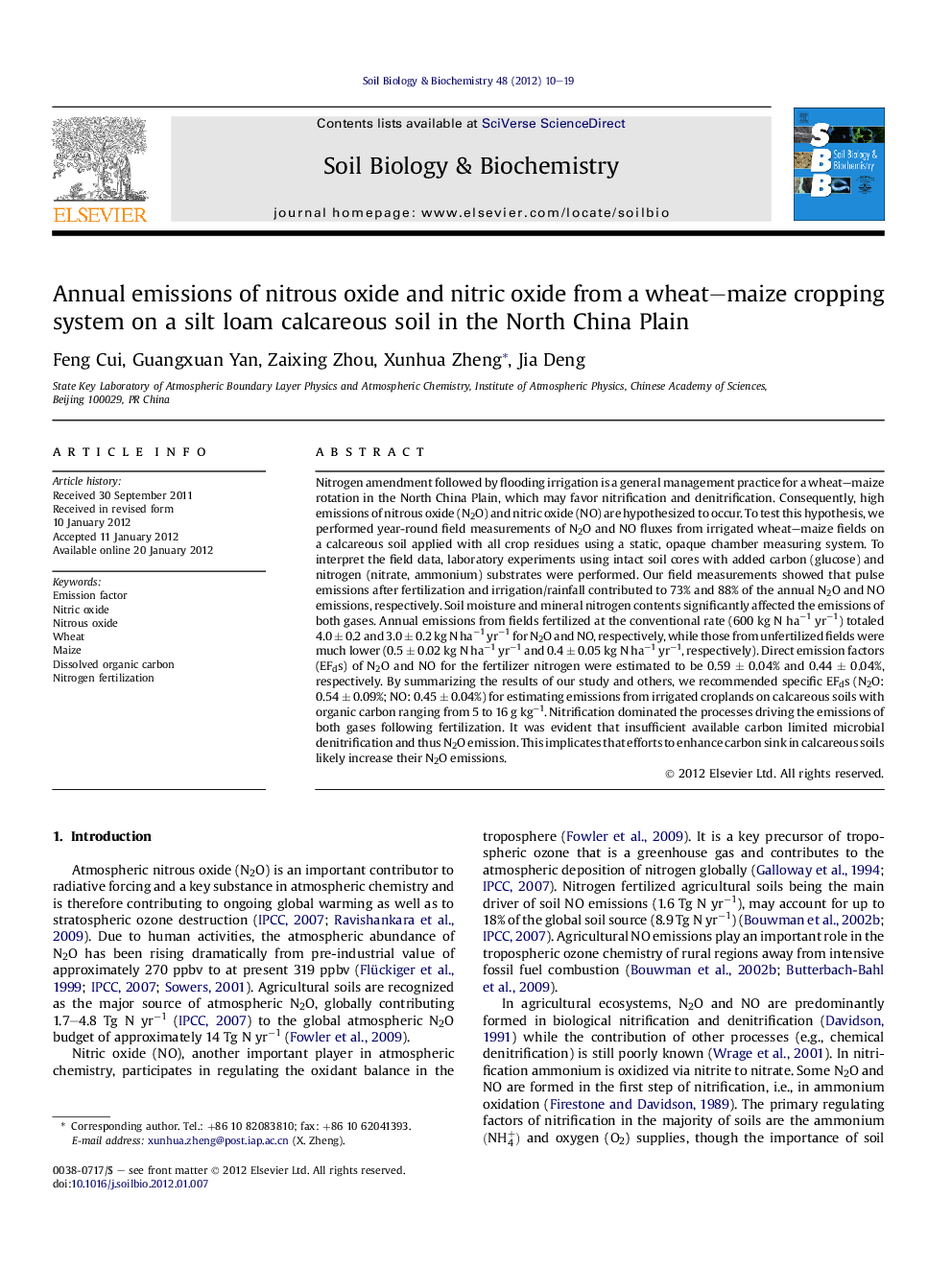| کد مقاله | کد نشریه | سال انتشار | مقاله انگلیسی | نسخه تمام متن |
|---|---|---|---|---|
| 2024928 | 1542636 | 2012 | 10 صفحه PDF | دانلود رایگان |

Nitrogen amendment followed by flooding irrigation is a general management practice for a wheat–maize rotation in the North China Plain, which may favor nitrification and denitrification. Consequently, high emissions of nitrous oxide (N2O) and nitric oxide (NO) are hypothesized to occur. To test this hypothesis, we performed year-round field measurements of N2O and NO fluxes from irrigated wheat–maize fields on a calcareous soil applied with all crop residues using a static, opaque chamber measuring system. To interpret the field data, laboratory experiments using intact soil cores with added carbon (glucose) and nitrogen (nitrate, ammonium) substrates were performed. Our field measurements showed that pulse emissions after fertilization and irrigation/rainfall contributed to 73% and 88% of the annual N2O and NO emissions, respectively. Soil moisture and mineral nitrogen contents significantly affected the emissions of both gases. Annual emissions from fields fertilized at the conventional rate (600 kg N ha−1 yr−1) totaled 4.0 ± 0.2 and 3.0 ± 0.2 kg N ha−1 yr−1 for N2O and NO, respectively, while those from unfertilized fields were much lower (0.5 ± 0.02 kg N ha−1 yr−1 and 0.4 ± 0.05 kg N ha−1 yr−1, respectively). Direct emission factors (EFds) of N2O and NO for the fertilizer nitrogen were estimated to be 0.59 ± 0.04% and 0.44 ± 0.04%, respectively. By summarizing the results of our study and others, we recommended specific EFds (N2O: 0.54 ± 0.09%; NO: 0.45 ± 0.04%) for estimating emissions from irrigated croplands on calcareous soils with organic carbon ranging from 5 to 16 g kg−1. Nitrification dominated the processes driving the emissions of both gases following fertilization. It was evident that insufficient available carbon limited microbial denitrification and thus N2O emission. This implicates that efforts to enhance carbon sink in calcareous soils likely increase their N2O emissions.
► Field and laboratory experiments are conducted to investigate N2O and NO emissions.
► The annual EFds of N2O and NO are 0.59 ± 0.04% and 0.44 ± 0.04%, respectively.
► Nitrification is the dominant process for N2O and NO production after fertilization.
► Insufficient carbon substrates limit denitrification.
Journal: Soil Biology and Biochemistry - Volume 48, May 2012, Pages 10–19